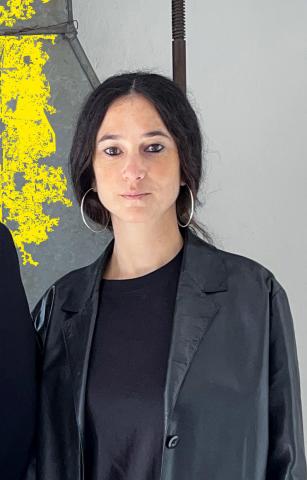
Why Concrete?
Concrete is the most widely used building material in the world—yet also one of the most hotly debated. And with good reason. Each year, more than 30 billion tons of concrete are used worldwide. Its carbon-intensive production accounts for 8% of global CO₂ emissions, not to mention the environmental impacts from the extraction it necessitates. At the same time, its versatility, stability, and malleability make it hard to replace in certain situations, putting pressure on us to rethink its composition and use. “When should we use it?” and “how should we use it?” should go hand in hand with all efforts to improve its embodied energy. These are design choices as much as they are technical ones.
Since its origins in ancient Rome, concrete has undergone significant transformations from serving highly specific uses in infrastructures to becoming an industrialized everyday material. Its ease of use and widespread availability has positioned it as a central material in modern construction, valued for both functional and aesthetic qualities. In the modern era, the appeal of exposed concrete, emerged as a hallmark of post-war architecture, reflecting structural honesty and boldness. During this period, precast concrete elements enabled efficient construction of large-scale structures, emphasizing the material’s durability, affordability, and availability. Its properties—fire resistance, thermal mass, stiffness, noise isolation, and suitability for prefabrication—make it indispensable. However, with the urgency of climate change today, efforts to innovate and reduce concrete’s environmental impact have become critical. Some groundbreaking work is already under way. Innovative mixtures such as infra-lightweight concrete, ultra-high-performance concrete, and textile-reinforced concrete are pushing the boundaries of what concrete can achieve. Digital construction technologies, including 3D-printed formwork and direct concrete printing, optimize material use and reduce waste. In the context of reuse, the disassembly of concrete structures has also gained in significance, casting new light on ideas of prefabrication and modularity. While extensive attention have been given to timber and other regenerative materials, concrete has become a taboo topic. Yet it is the material most in need of rethinking. Given its numerous challenges, the future use of concrete must be investigated through multidisciplinary and holistic approaches to deepen our understanding of its opportunities and limitations. But most importantly, we should not lose sight that this is not simply a technical question. Rather it is a design question.

Material Revolution
As a composite material, the performance and appearance of concrete depends on a number of variables, from the cement to the gravel to the additives. Each component presents an opportunity to rethink the ecological impact. Advancements in composites such as Hempcrete and Infralight concrete have provided not only new material expressions but also new ways of building that rethink the conventional wall systems. In turn, these revolutionize the economic, labor, and social systems of construction. As a process, the casting of concrete has also be interrogated. New methods of construction, from digital tools to new formworks address material optimization and waste reduction. Together these measures are changing not only the look and feel of concrete but also how we might understand it.

Circularity
Besides its extraction, the largest impact from concrete comes in its end-of-life. As we increasingly contend with the obsolescence of the buildings we inherit from its heyday, the question of re-use becomes critical. What strategies can be used to harvest existing concrete elements for direct re-use, and what methods are available to evaluate their performance? If new construction is unavoidable, how can design be approached more intelligently to facilitate maintenance, repair, and disassembly? How should joints and components be designed to anticipate future re-use? Can prefabrication allow us to more effectively address circularity?

Spatial Systems
Protagonists like Heinz Isler, Felix Candela, Pierluigi Nervi have shown the structural and expressive potentials of highly calibrated designs with concrete. But these days concrete is mostly used indiscriminately and in abundance, employed more out of convenience than out of conviction. When should we use concrete and if we use it how can we optimize its use? What strategies could help reduce material requirements and elevate the value of concrete? And if concrete is used, what strategies could help extend the lifespan of a building and thereby its material investment?















